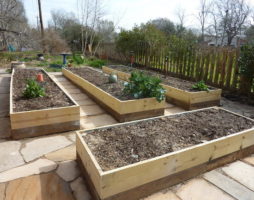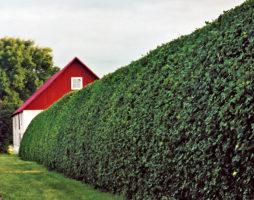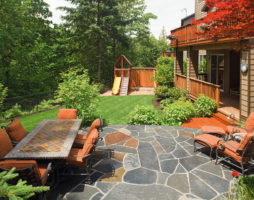For a city dweller, the “concept of a house” usually does not go beyond the stairwell or entrance. He is also of little interest in the improvement of the local area, since this is the patrimony of municipal services. The house is perceived quite differently by those who live in the private sector.
For them, the word "yard" is not an empty phrase, since not only the appearance of the entire site, but also the comfort of staying on it depends on the quality of its improvement. Looking at the design of the local area, you can immediately get an idea of how diligent the owners of the house are. This area can be put in order in different ways: lay out tiles, equip wooden flooring, asphalt, finally, but the most practical and clean owners still prefer concreting the yard.
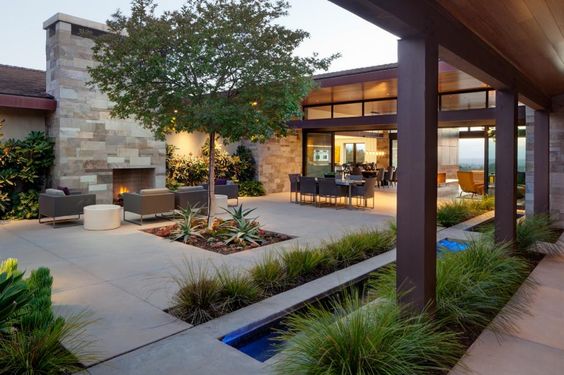
Concrete interior house
We will try to figure out whether it is worth giving preference to this option and if so, how to do it correctly.
back to index ↑Three Reasons to Concrete
Why should the decision to concrete the yard be considered the right one?
Firstly, a concrete-filled area is easier to keep clean. Impenetrable dirt will not collect on such a coating, grass will not grow through it and it will not have to be weeded out. In winter, it will be easier to free the yard from blockages of snow.
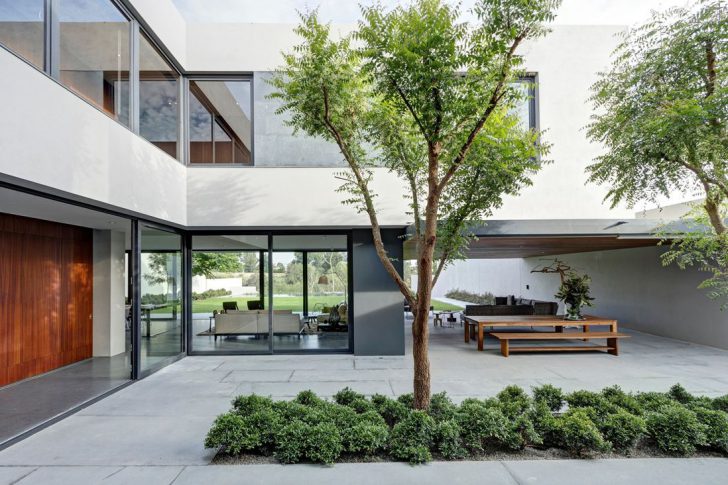
A concrete yard is easier to keep clean
Secondly, you will get a solid, flat surface that can be driven by a car of any class, even a truck. At the same time, the yard will not be torn apart by wheels and covered with gullies.
Third, it's just aesthetic. When concreting the adjacent territory, you can ennoble it along the way by allocating places for flower beds, benches, providing a network of alleys, etc.
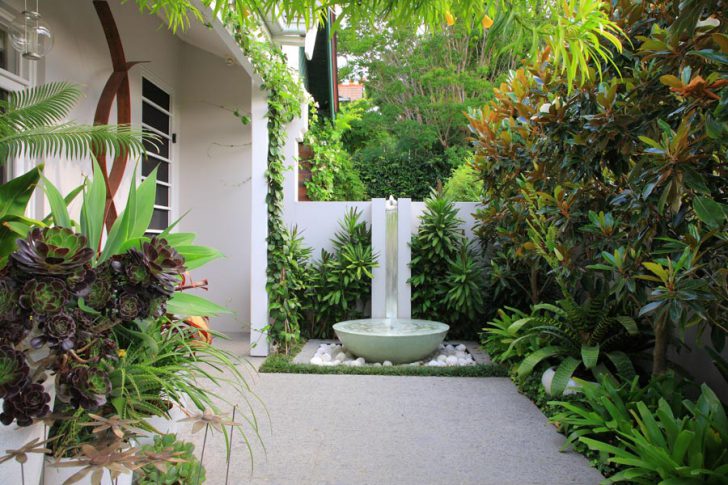
With the help of concreting the yard, you can zone the space
In order for concrete to retain an attractive appearance for a long time, and its surface integrity, it is necessary to strictly follow the technology of its pouring process.
back to index ↑How to pour concrete in the yard
"Plastic will be very useful if you plan to concrete the yard in an abstract form with curly paths"
Preliminary work
First of all, we prepare the site. The surface must be leveled and the top layer of soil overgrown with grass roots removed. The removal of the soil layer should be carried out wisely. If it is fertile land, it should be transferred to flower beds or sent to beds. Concreting of the yard must be carried out at the level of natural relief.

Topsoil cleaning
Work on this issue begins with the fact that the marking of the territory is carried out, indicating the location of the sites, paths and other elements, and in accordance with this marking, excavation is carried out. On average, you have to remove up to 20 cm of soil. This is not much at all, as it may seem. The fact is that the concrete coating does not respond well to moisture, so a good drainage cushion should be laid under it. The creation of the latter will have to be dealt with immediately after removing the soil. Crushed stone is required for drainage. It is poured into prepared recesses and clinched with sand.The thickness of the crushed stone cushion should be at least 15 cm. If the drainage is planned to be made from a mixture of crushed stone and construction debris such as broken bricks, the remains of an old concrete or asphalt pavement, etc., then it must be covered with an even larger layer.
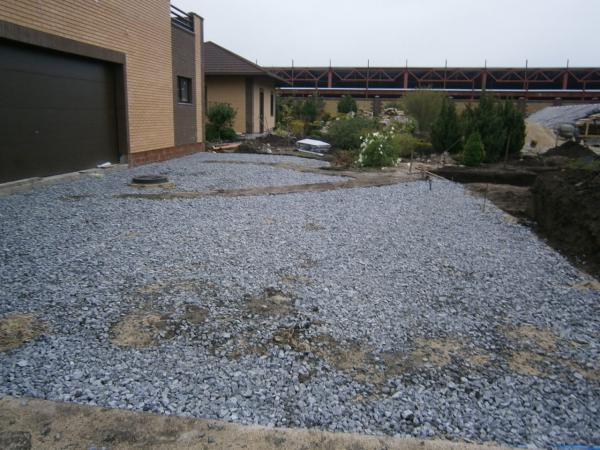
Drainage area with rubble
Provided that your house is on infertile land and you have to deliver and pour black soil, the site for concreting can not be deepened. In this situation, the preparatory work will be reduced to marking and adding rubble. If the basis of the site is clay soil, which does not shrink, then you can do without a drainage cushion. In the same way, they act on hard, not overgrown with grass and well-packed land.
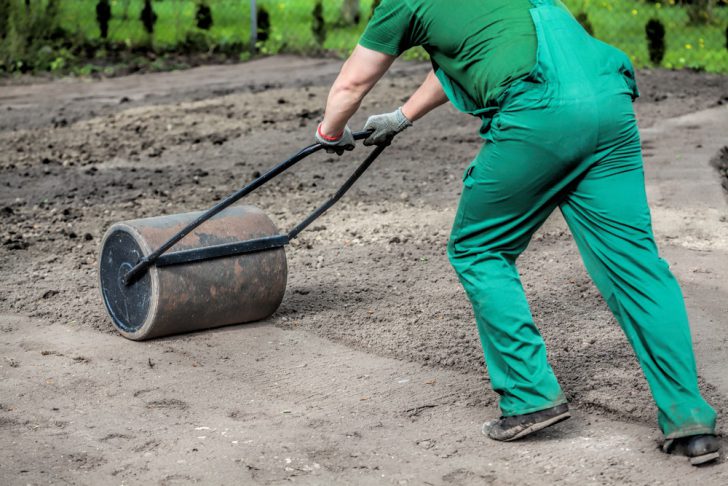
Compaction of the earth on the site
Experts recommend covering the drainage layer with plastic wrap to protect the concrete from moisture and prevent it from being broken by sprouting grass.
In order for the concrete to harden in the required form, and not spread over the entire area, it must be poured into the formwork, which can be built from improvised material with a smooth surface. You can launch:
1. Boards (this is ideal).
2. Plastic panels.
3. Chipboard pieces.
4. Slate sheets.
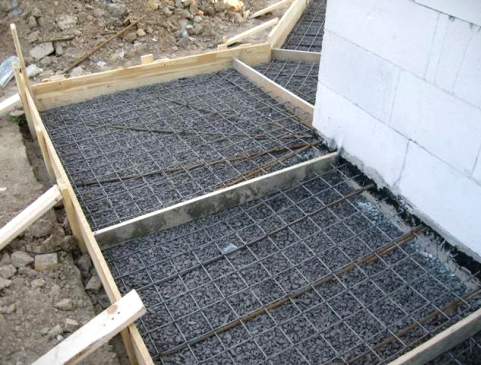
Wooden formwork for concreting
Plastic will be very useful if you are planning to concrete the yard in an abstract form with curly paths. The material is very pliable in work and easily accepts any configuration.

Plastic formwork suitable for figured concreting
The formwork is placed along the perimeter of the site, exactly repeating its contour. Mounting the structure is easy. Boards or other material are laid along a given path and supported with pegs driven into the ground. Now you can start the main work.
Stage one - beacons
The technology of concreting the yard is somewhat different from the work on leveling the floor in the room, so the standard level will not help you. The relief of the terrain will not allow to withstand the horizon during the pouring, so it is necessary to find an alternative replacement for the level. An unusual system, referred to by professionals as a "spider", will help to cope with the task. It is created from 4 tightly stretched threads.
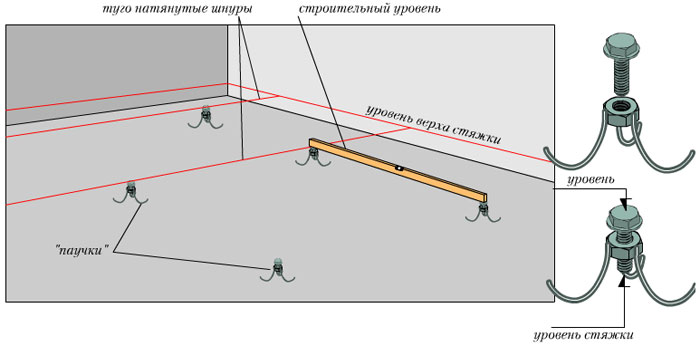
Spider concrete leveling system
Making a "spider" is not difficult. To begin with, drive wooden stakes or pieces of reinforcement into the corners of the site preparing for concreting. Now let two parallel threads run from corner to corner. We fasten the remaining threads in the same parallel order, but not to the pegs, but to the already stretched threads themselves, and we do this on the so-called “air loops” so that they can be freely moved in the right direction. Beacons are placed at the point of contact with the crawling threads. Next, select the angle of inclination of the site. This must be done to ensure the outflow of rainwater. Look at the features of the surrounding landscape and decide where it is most beneficial for you to direct storm flows.
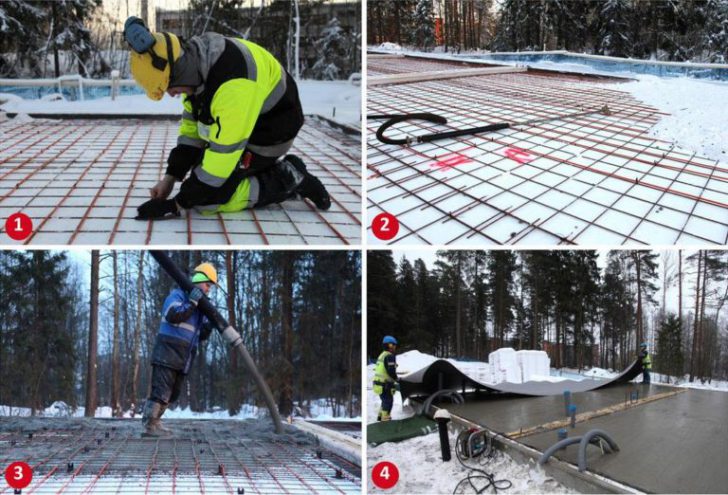
Filling the site with concrete using the "spider" system
Now you can begin to remove the backfill level of the drainage layer. To set the "spider" in the correct plane, you need to work with the threads. The main ones, which are fixed on stakes, are lowered to a height of 15 cm from the base of the site. Sometimes it becomes necessary to adjust one of the sides in terms of level. This is done using a special device designed specifically for such work. The level for threads is equipped with hooks, thanks to which it is very easy to attach it to them. Now set the desired position of the thread, having achieved its absolute horizontality, and you can consider your "spider" adjusted in space. Everything is ready to install beacons.
It is done like this. Mix the solution and spread it in a row in small slides. They will become the holder of the profile pieces used in the creation of drywall systems. The height of the beacon should be such that it only slightly touches the "spider" threads.Landmarks are set at a distance equal to the length of the rule, which will stretch the concrete.

Installed beacons on fittings
Stage two - reinforcement
Experienced summer residents know firsthand how to properly pour concrete into the yard. They are aware that concrete is prone to cracking. This happens especially often at the junction of sections flooded at different time intervals. Laying reinforcement between beacons will help prevent trouble. The best option would be a reinforcing mesh made of thick wire threads, there will be no sharp edges that need to be folded.
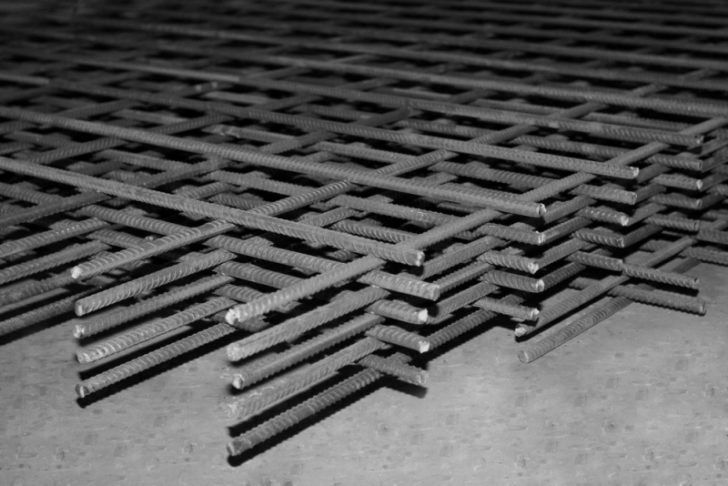
Reinforcing mesh for concreting
It is not worth skipping the reinforcement stage, since this is the only way to ensure the integrity of the concrete canvas and reduce the number of cracks to a minimum threshold. The presence of a reinforcing layer of those who carry out the reconstruction of the yard in parts will help out a lot. The coating will turn out smooth and retain its integrity and attractiveness for many years.
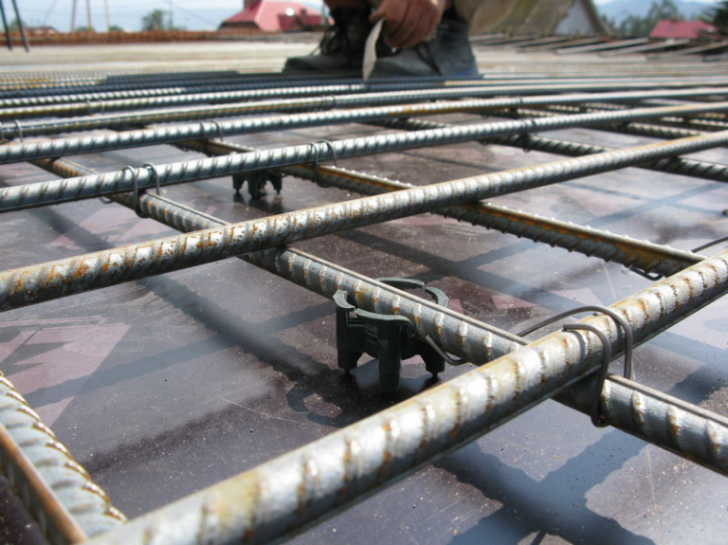
Reinforcement will protect concrete from cracking
Stage three - concreting the yard
To fill the yard with concrete, you first need to prepare a working solution. This can be done in different ways, so consider the most common way. Let's start with proportions. To obtain concrete, you need to mix three components:
1. Cement.
2. Sand.
3. Rubble.
They are mixed in a certain proportion. Three buckets of sand and a bucket of rubble are placed on a bucket of cement. You can find recommendations where it is indicated that two buckets of sand and gravel should be mixed into a bucket of cement, but in the absence of a vibrating screed, it should not be prepared. Manually, you will never be able to stretch and perfectly level the concrete surface.
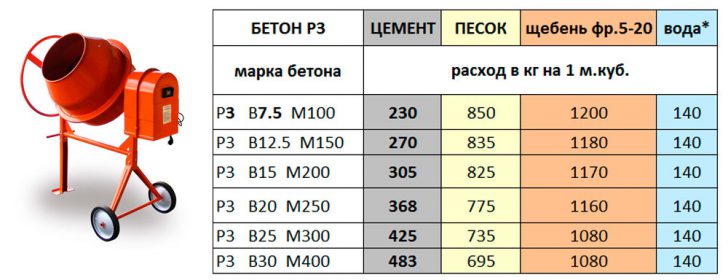
Proportions for making concrete
The presence of such a mechanism as a concrete mixer will greatly facilitate the work of mixing the solution.
In the absence of auxiliary mechanisms, it is possible to concrete the yard in an alternative way. It provides for two actions. First you fill in the solution, which contains a lot of rubble, and leave it with little or no alignment, that is, as it will lie. The second is to fill the site with a concrete solution, in which there is practically no admixture of crushed stone. The final layer can be quite thin, only a couple of centimeters. This is a very economical option for decorating the yard, as it does not require the involvement of expensive fixtures. However, there is a "pitfall" here as well. In order for the concreting to go “with a bang”, you need to fill the yard in one day. Day breaks are not allowed here. If the bottom layer seizes, you will no longer be able to tie the top layer to it.
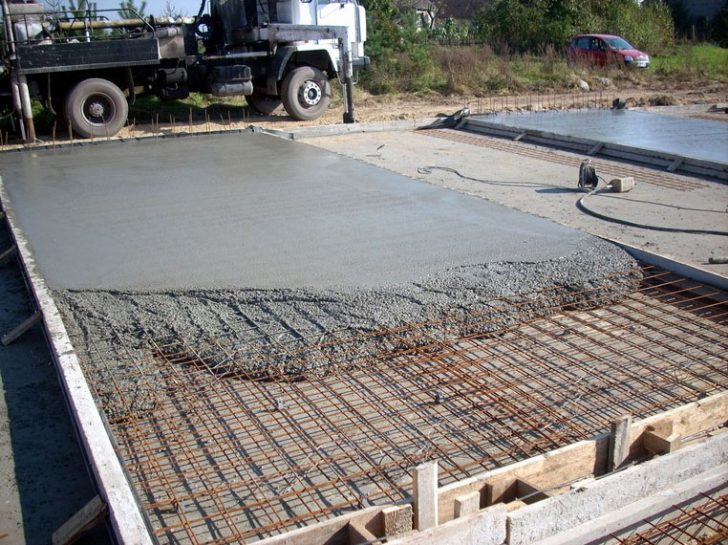
Multilayer concrete pouring
The process of mixing concrete begins with pouring into a concrete mixer or a trough of water. Its quantity is determined empirically. For a guide, again, you can take a bucket. Approximately the ratio of water and cement should be 1:1. Add the rest of the ingredients to the water and mix thoroughly. The solution can be considered ready when no sand is visible in it.

Mix all ingredients thoroughly
Let's move on to the fill. Concrete is unloaded onto the ground and carefully, with a shovel, is distributed to nearby lighthouses. A layer of solution should cover them. Now you should remove its excess. You will need a flat rail or something similar. It must be placed on the nearest visible lighthouses and pulled, as if on rails, to rake off excess concrete. The procedure is repeated several times in different directions. Your task is to make the surface as even as possible. If you are too far from the ups and downs of construction, but have a great desire to equip your house with your own hands, you can find thematic videos and see clearly how to fill the yard with concrete correctly.
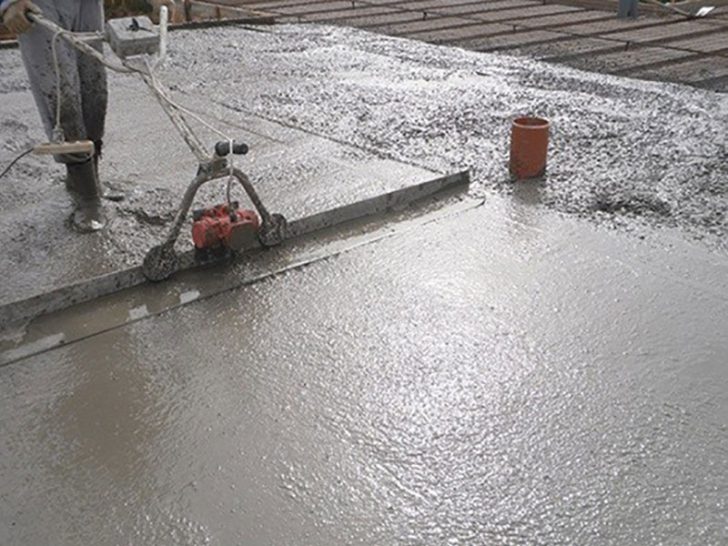
Leveling the surface of the concreted area
Try to mix the solution well. If this is not done, the view of the courtyard will not be very aesthetic.A poorly tightened mortar will be full of bumps and lumps of unbroken sand. But even if everything is done perfectly, do not apply to cover the concrete with another reinforcing polymer layer. Be sure to topping the weakest places to loads:
1. Corners.
2. Edges.
Polymer processing is carried out in two ways. In the first case, its dry mixture is poured over freshly laid concrete, in the second, a liquid solution of the hardener is prepared, which is poured into the grooves prepared in the already set concrete, centimeter deep.
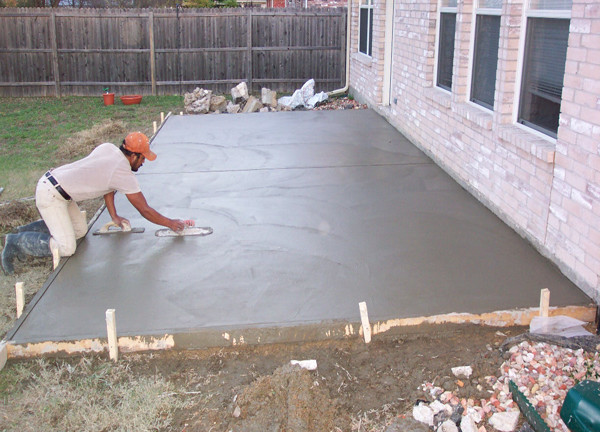
Polymer concrete treatment
Features of drying concrete pavement
The concrete screed must be properly dried. This will give it extra strength. The process must go slowly. After water leaves the surface of the setting concrete, it is cleaned, eliminating all bumps and sagging, and covered with a film. If the weather is too hot, the concreted area will have to be watered. It is imperative to do this, since already at + 30 °, concrete mixed with aluminous cement will lose half of its strength reserve.
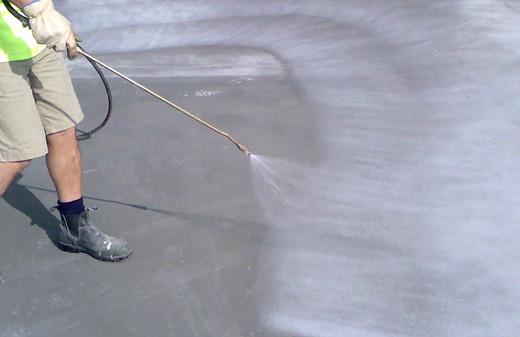
At high temperatures, pour concrete with water
If during the pouring of the yard, temperature gaps were not made in the concrete surface, you will have to pick up a grinder and cut them through the dried layer.
Now the process of concreting the yard can be considered complete.
back to index ↑Care of the concrete area
In principle, the hardening of concrete occurs quite quickly, but it takes a longer time to gain the main strength. So in the first days after the formation, you should not drive cars onto a freshly poured site, drop weights on it, etc.
It is important to maintain the moisture balance not only during the formation of the concrete solution, but also in further operation. In a strong heat, the yard will be useful periodically watered with a hose. In the rest of the period, it will have enough moisture that falls during precipitation.
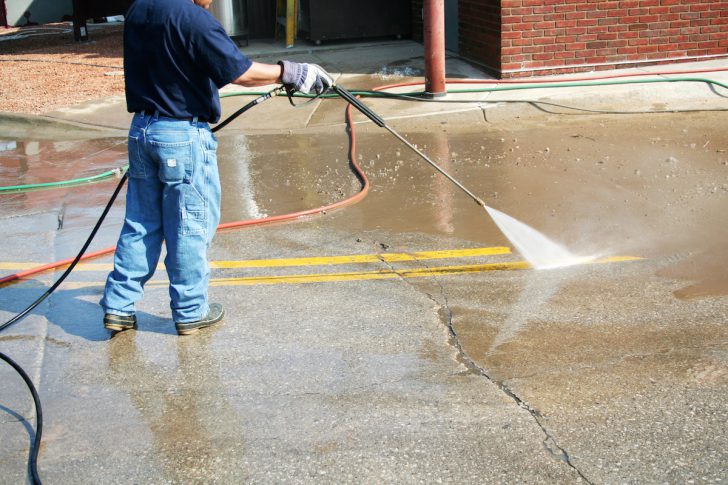
Moisten the concrete periodically in the summer
It is good to process a concreted yard with special protective compounds that are sprayed on the surface from a spray bottle.
back to index ↑The subtleties of street concreting with your own hands
“To maintain a comfortable moisture content of concrete will help its treatment with compounds with hygroscopic salts”
1. The quality of the resulting concrete is affected not only by the brand of cement, but also by the quality of such a seemingly minor element as sand, so do not be lazy to check its quality. Let's start with the fact that it is better to take coarse-grained sand for work, practically without clay impurities. You can check how good the product you are offering is in the most primitive way. Place a small amount in a plastic water bottle, shake lightly and let stand for a few minutes. If the water is cloudy and the resulting turbidity does not settle, then the sand has silty deposits or there is too much clay in it. Naturally, you do not need to take it to work.
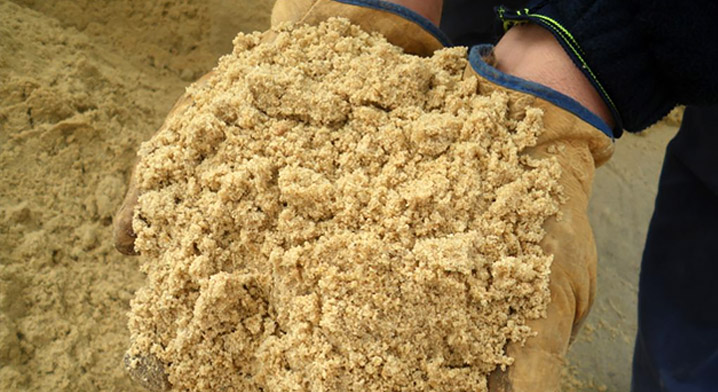
The quality of concrete depends on the right sand
2. The concrete surface can be further strengthened by applying the ironing technique. Pure cement is poured into the already setting mortar in small portions and rubbed into the surface with a trowel or spatula.
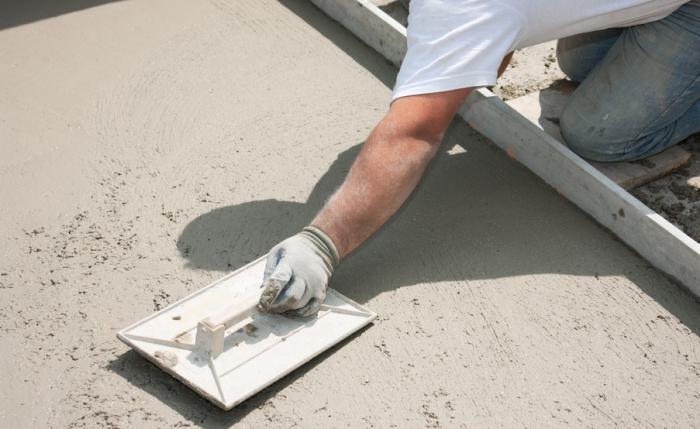
The process of ironing concrete
3. To maintain a comfortable humidity of concrete, its treatment with compounds with hygroscopic salts will help. They are able to absorb and accumulate moisture from the atmosphere. The method is unacceptable for use in regions with too low air humidity, since in this situation the salts will draw water from the concrete coating itself.
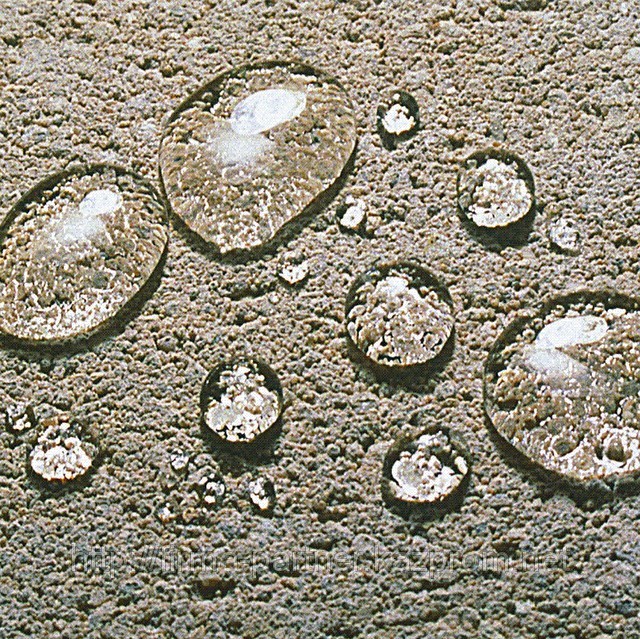
Impregnation of concrete with hygroscopic salts
4. We have considered how to properly fill the yard with concrete and protect it from moisture loss, now we need to take care of protection from sun exposure. The easiest way to do this is to paint the surface with white paint, the light-repellent qualities of which are well known to everyone.
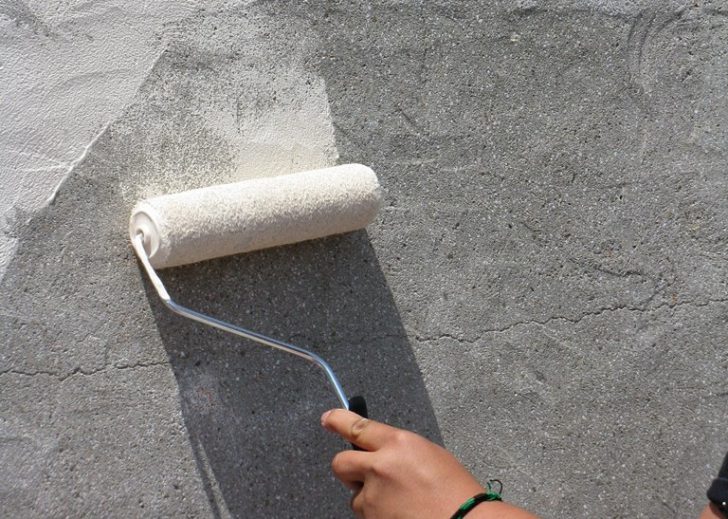
White paint will protect concrete from moisture loss
5. If toppings were used to harden the corners and edges of the courtyard area, then it is not worth pouring water into these places immediately after the formation of concrete. This can cause the protection to peel off.
6. The degree and side of the slope of the surface must be foreseen during the preparatory work. At the same time, the organization of drainage grooves is also thought out. The love of concrete for water does not mean at all that puddles must constantly stand on it. Iron pipes will help to quickly form drainage channels, which are placed on the hardening concrete and pressed with something heavy. After becoming the surface of the pipe is removed. The grooves remaining from them will perfectly cope with the drainage of water.
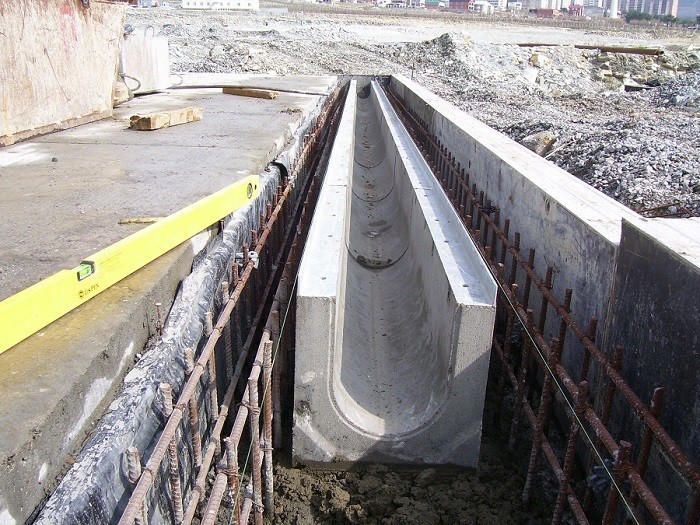
Drainage channels for concrete surfaces
7. Concrete most often cracks in those areas where islands of sections that were poured and hardened at different times join. If your yard is too large, then it is worth calling assistants to try to do all the work, avoiding daily breaks in pouring the solution.
back to index ↑Conclusion
If you adhere to the described technology and work only with high-quality materials, then without even imagining until today how to fill the yard with concrete correctly, you can do it at the highest level!

